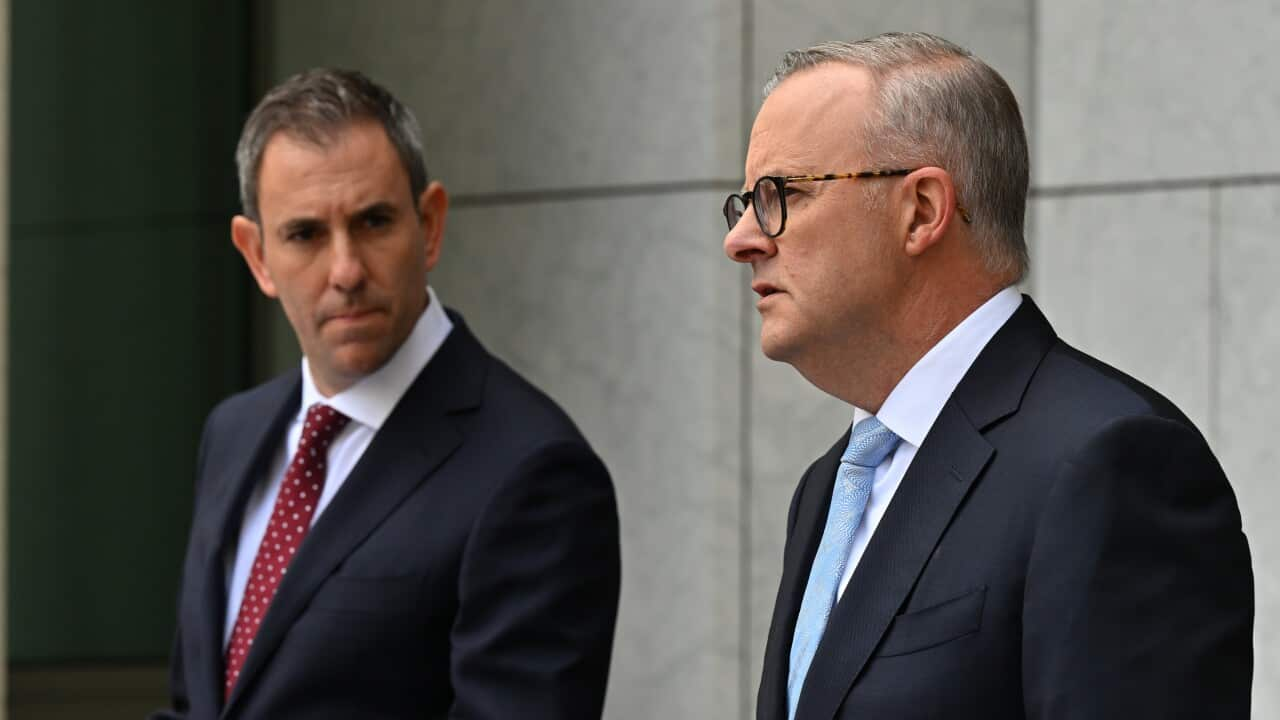KEY POINTS:
- Anthony Albanese is under pressure to raise the JobSeeker rate in next month's budget.
- Recipients say they are struggling to feed themselves as cost of living pressures mount.
- Labor has so far refused to commit to the measure, but says some form of relief is on the way.
For Melissa Fisher, 41, the situation is dire.
“I've been a JobSeeker for several years, and I would say the last six months have been the hardest that's ever been," she says.
“I know people that have reached out to me who are suicidal at this point, because they're just not coping with the cost of living and the lack of payment."
(less than $50 per day). For a single Youth Allowance recipient aged 22 or over and living out of home, that drops to just $335.95.

JobSeeker recipient Melissa Fisher says "there's just nothing left" once bills are accounted for. Source: Supplied
Notably, crossbench senators Lidia Thorpe, Jacqui Lambie and David Pocock — key votes whenever Labor attempts to pass legislation in the upper house — and four of Mr Albanese's own MPs have also joined the call.
But Labor is so far refusing to commit to an increase, saying it's concerned that increasing spending would add to inflation already driving a cost of living crisis.
It insists some form of cost of living relief will be unveiled in the May budget.
What is living on JobSeeker like?
Once rent, electricity and phone bills (needed to apply for jobs) are paid for, Ms Fisher says "there's just nothing left".
"There are days I’ll eat one meal a day. There are days where at lunchtime, I'll be a little bit hungry, but I'll think: ‘No, I've got to save that for dinner’," she says.
Ms Fisher says she was diagnosed with malnutrition and scurvy last year, but still feels luckier than some others; she says she's "so thankful" to have access to public housing.
Every two to three weeks, she is also forced to spend $50 on an antibiotic cream to treat a skin condition. When she requires the cream fortnightly, the cost accounts for nearly 10 per cent of her overall payment.
Looking at the average unit cost in every Australian capital city, the uphill battle facing recipients is clear.
A report by the Australian Council of Social Service on the cost of living, released in January, found that 96 per cent were spending at least 30 per cent of their income on housing.

What's being suggested?
The ACOSS report called for a $25 daily increase to JobSeeker, which would raise the payment to $73.
The transformation on the lives of JobKeeper recipients would be simple, Ms Fisher says.
“It means I'd actually be able to afford proper food. I would actually be able to afford vegetables," she says.
The government's own economic inclusion report, published this month, warned social welfare payments are now so low that they actually hamper recipients' attempts to find a job.

A cross section of community advocates, unions and politicians (including David Pocock, centre) are calling for a JobSeeker raise. Source: AAP / Lukas Coch
"During the COVID supplement, I was the closest I've ever been to being work-ready. I was eating properly, my health had actually improved. I could actually see a future for myself," she says.
"Then we just pulled straight back into poverty. My health again declined. I'm in no way able to get a job while I'm getting these infections and getting sick because I'm not eating properly.
"At the moment, JobSeeker's more of a punishment than a help."
What's the government saying?
Despite both speaking out in support of a raise while in opposition, the treasurer and prime minister are avoiding commitments on the rate.
In 2020, and supported by a number of his frontbench colleagues, Mr Albanese insisted $40 a day "isn't enough to live on".
"When Australians fall on hard times, we should help them get back on their feet," he tweeted.
He's now under pressure from his backbench to follow through, with four Labor MPs — Alicia Payne, Kate Thwaites, Louise Miller-Frost, and Michelle Ananda-Rajah — signing onto the public letter.
Mr Albanese, whose mother was on the disability pension, said on Wednesday that he empathised with the families facing strain but stopped short of promising a raise.
"I understand that people are under real pressure. I certainly understand that ... It is unsurprising that people in the Labor Party want to do more," he said.
"What we will be doing in the budget is balancing up the need to provide cost of living relief for people, with making sure that we show restraint so we don't add to inflationary pressure."
Mr Chalmers did not answer directly when asked whether he could survive on $49 a day, saying he wanted to move people off JobSeeker.
"My job is to weigh up all the competing demands on the budget, to do the right and responsible thing, to try and make it all add up," he said on Wednesday.









